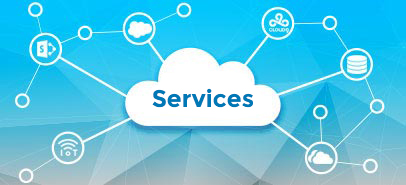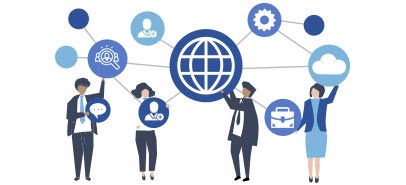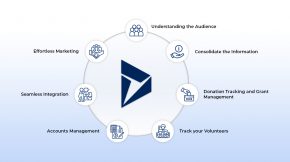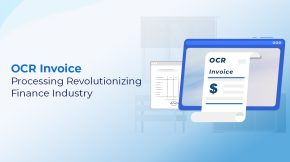Power Pages vs Conventional Development: How to Choose The Best Website Approach for Your Business
Do you ever wonder if there’s a better way to build a business website—one that doesn’t take months or eat up your budget? Many businesses feel stuck between easy website builders and full-code custom sites. But what if you could have both speed and control, without the usual roadblocks? In this article, you’ll see how Microsoft Power Pages and conventional web development compare, so you can pick what fits your business best.
What is Power Pages
Sometimes you need a website, but you don’t want to deal with coding at all. That’s where Power Pages comes in. It’s Microsoft’s low-code web development platform. You can build websites without writing code (or with very little). And you don’t have to be a developer to use it. Your marketing team or business analysts can handle it by dragging and dropping parts into place. If your company already uses Microsoft tools like Dataverse or Dynamics 365, Power Pages will connect with them easily.
Microsoft Power Pages Features
- Build websites quickly, sometimes in just days
- Drag-and-drop editor for simple design (so you can make changes without coding)
- Templates for common business website needs
- Works well with Microsoft services (Dataverse, Dynamics 365, and others)
- Security and compliance are handled by Microsoft (they take care of updates and patches, so you don’t have to worry about them)
What is Conventional Web Development
Conventional web development (sometimes called traditional or full-code development) is when developers write all the code for your website from scratch. This gives you control over every detail. You can add any feature you want. You aren’t limited by templates or platform rules. It works for all kinds of projects, but it usually takes more time, more money, and technical skill.
Traditional Website Development Process
- Plan what you need and decide how the site should work
- Design the look (this means making it match your brand and what you want visitors to feel)
- Developers write code for everything—what users see and what happens behind the scenes
- Test every part of the website to make sure it works well (sometimes this means checking on different browsers or devices)
- You (or your team) need to update and maintain the site (including handling security fixes and changes)
Power Pages vs Conventional Development Comparison
| Feature |
Power Pages |
Traditional Web Development |
| Speed |
Websites go live fast with templates |
Takes longer but is fully customizable |
| Customization |
Limited to platform options |
Anything is possible |
| Integration |
Best with Microsoft tools |
Can connect with any software or service |
| Security and Compliance |
Managed by Microsoft |
You must handle it yourself |
| Cost |
Predictable fees, lower at first |
Higher up-front, can be lower over time |
| Skill Required |
Easy for non-tech users |
Needs technical knowledge |
| Scaling |
Good for small/medium sites |
Best for large, high-traffic projects |
(If you’re thinking about handling a lot of users at once, like during a big sale, traditional development might give you more options for performance.)
Benefits of Power Pages
If you want a website that works quickly, is easy to update, and doesn’t need a developer for every change, Power Pages can help. It’s also good if your business already uses Microsoft tools (because it connects smoothly with them). You’ll know your monthly cost up front, so there’s less surprise in your budget.
Power Pages Development Pros and Cons
Pros:
- You can launch faster (sometimes in just a few days)
- Easy for non-developers to use
- Lower initial costs
- Security is handled for you
Cons:
- Less control over design and features (because you follow the platform’s rules)
- Best with Microsoft tools (not as easy with non-Microsoft software)
- Not for very unique or complex websites (if you need something special, it might not be enough)
Low-Code vs Full-Code Development
Low-code tools like Power Pages make it possible to build and launch websites quickly, using tools that don’t need much technical skill. You don’t have to know how to code. Full-code (conventional development) means your team writes all the code (or you hire a developer). This gives you total freedom but takes more time and expertise. Low-code is best for business portals, internal tools, or when you need something live soon. Full-code is better for unique or complex needs, or when you expect a lot of visitors.
(If you’ve never built a website before, low-code can feel much easier to start with.)
When to Use Power Pages
- You need a website right away
- Your needs are simple or standard (like an info page, a contact form, or a business portal)
- Your team already uses Microsoft products
- You want to keep costs predictable
When to Use Conventional Development
- You want a website that’s one of a kind
- Your site needs to handle lots of users at once (for example, if you expect big traffic spikes)
- You want to use other technology, not just Microsoft
- You’re planning something long-term and want to be able to change everything
Low-Code Web Development Platforms and How They Fit
Platforms like Power Pages are part of a bigger trend. Businesses want to build websites and apps with less technical work and fewer resources. Low-code web development platforms help you get started without needing big teams or a lot of money up front. But if your project is complicated or needs special features, full-code (traditional) development might be better.
Success Story Using Custom Code
Some businesses need more than templates. For example, one e-commerce company used conventional development to build a custom recommendation engine (this is a system that suggests products based on what shoppers have bought or looked at before). This was only possible with full-code development—not with Power Pages or any low-code tool. Their sales increased because the website felt smarter and more personal to each user.
How to Decide What’s Right for You
If you want results quickly and already use Microsoft tools, Power Pages could be your best option. If you want something special, or expect your site to grow, conventional web development might be better. Sometimes, companies use both (for example, low-code for internal tools and full-code for public websites). This way, you get speed where you can and control where you need it most.
Need Help Choosing
If you’re not sure which path fits your business, we’re here to help. You don’t have to decide alone. Ready for a no-pressure conversation about your website requirements? Let’s have a virtual coffee and see what’s possible.












